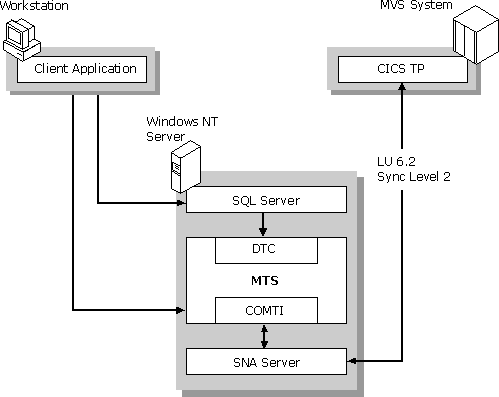
Today, many organizations use host computer systems to support real-time transaction processing applications, such as IBM’s Customer Information Control System (CICS). These applications are accessed through interactive sessions with the host system, such as a 3270 or 5250 session supported by a terminal emulator.
We have already described how the COM Transaction Integrator feature can be used to access simple mainframe applications at the program level. This feature becomes an even more powerful tool when used to extend transactions from the Windows NT Server environment to the mainframe. Windows-based applications that use Microsoft Transaction Server (MTS) can include CICS applications in MTS-coordinated transactions.
When coupled with MTS, COM Transaction Integrator can be used for a variety of purposes:
Developers using MTS in their applications can decide which parts of the application require a transaction and which parts do not. COM Transaction Integrator extends this choice to the mainframe, as well, by handling calls that require transactions and calls that do not.
For applications that require full integration between Windows-based two-phase commit and mainframe-based Sync Level 2 transactions, the feature provides all the necessary functionality without requiring you to change the client application. Also, no executable code needs to be placed on the mainframe, and little or no changes to the mainframe TPs are required. The client application does not need to distinguish between the COM Transaction Integrator component and any other MTS component reference.
Figure 10.2 shows an example of how a Windows-based client application uses the Distributed Transaction Coordinator (DTC) to coordinate a distributed transaction involving SQL Server and a CICS transaction program. The DTC is the part of MTS that coordinates two-phase commit transactions.

Figure 10.2 Integrating SNA Server with host transaction systems.